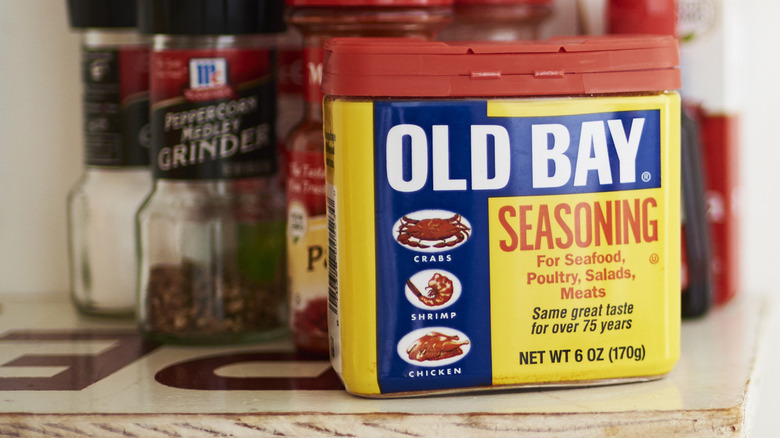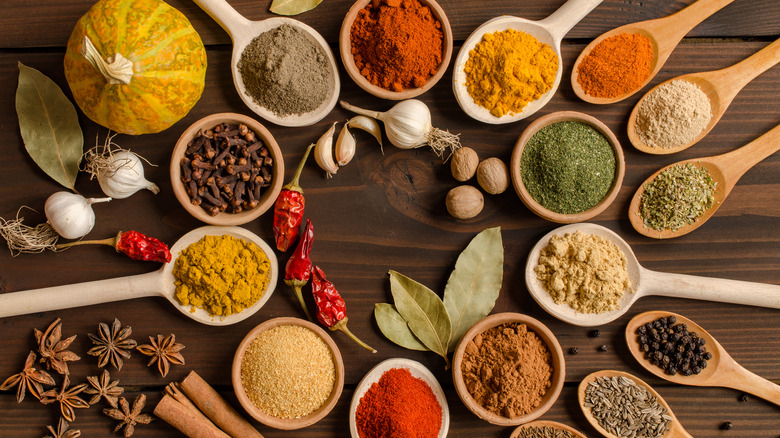What's Really In Old Bay Seasoning?
Home cook spice giant McCormick describes Old Bay seasoning as "sweet, spicy and savory all at once," and, with its boast of over 18 different spices, we believe it.
The blend was created over 75 years ago in the Chesapeake Bay region, and includes paprika, red and black pepper, and celery salt. It's even been heralded as "The Spice of Baltimore" by local newspaper the Baltimore Jewish Times. According to a poll by Goucher College, 83% of Marylanders over the age of 18 report liking the seasoning (only 11% didn't, and 6% made no comment). Chef Paul of Maryland's G&M Restaurant, which specializes in crab cakes, raves, "To get the true Maryland seafood flavor, you have to use both fresh and local seafood, and Old Bay."
It isn't just a local favorite. Old Bay was originally marketed as a seasoning for seafood, per JMORE (the original pitch was "Old Bay Seafood Seasoning"), but it has since been used to add flavor to popcorn, corn on the cob, deviled eggs, and more, via Greatist. Old Bay has even enjoyed its own line of vodka and, more recently, Goldfish crackers. The seasoning clocks in at a magnanimous 3.0 stars in customer reviews on the McCormick website — but most of the complaints are about the plastic packaging.
So, what's all the hype about? And what's really in Old Bay seasoning after all?
Old Bay: a Maryland mystery
Old Bay may be part of the McCormick spice rack, but the company didn't actually buy the rights to the seasoning until 1990. The story goes that Gustav Brunn, a Jewish German spice merchant, was sent to a concentration camp in 1938, via the Baltimore Jewish Times. His wife secured his release, and the family ended up in Maryland, where Brunn would find employment with McCormick Spice Company for a whopping three days; his English skills didn't make the cut.
Not deterred, Brunn rented an apartment next to Baltimore's Wholesale Fish Market and began working there as a spice curator for the seafood they caught. By 1940, he had created the seasoning Old Bay fans know and love today. According to the Baltimore Sun, Old Bay got its name from a local sailing company that sailed from Maryland to Virginia during the early 1900s called the Old Bay Line.
But, despite its historical renown and modern popularity, no one knows for sure what Old Bay seasoning really is except for the folks at McCormick. In addition to the confessed paprika, peppers, and celery salt, Old Bay substitutes will also add in dry mustard, cinnamon, cardamom, cloves, ginger, and mace (via Leite's Culinaria), as well as nutmeg, ground bay leaves, and allspice (via Culinary Hill). Even combined, though, all these hypotheses still wouldn't add up to equal the 18 spices promised on the Old Bay seasoning label — maybe they're all correct.

